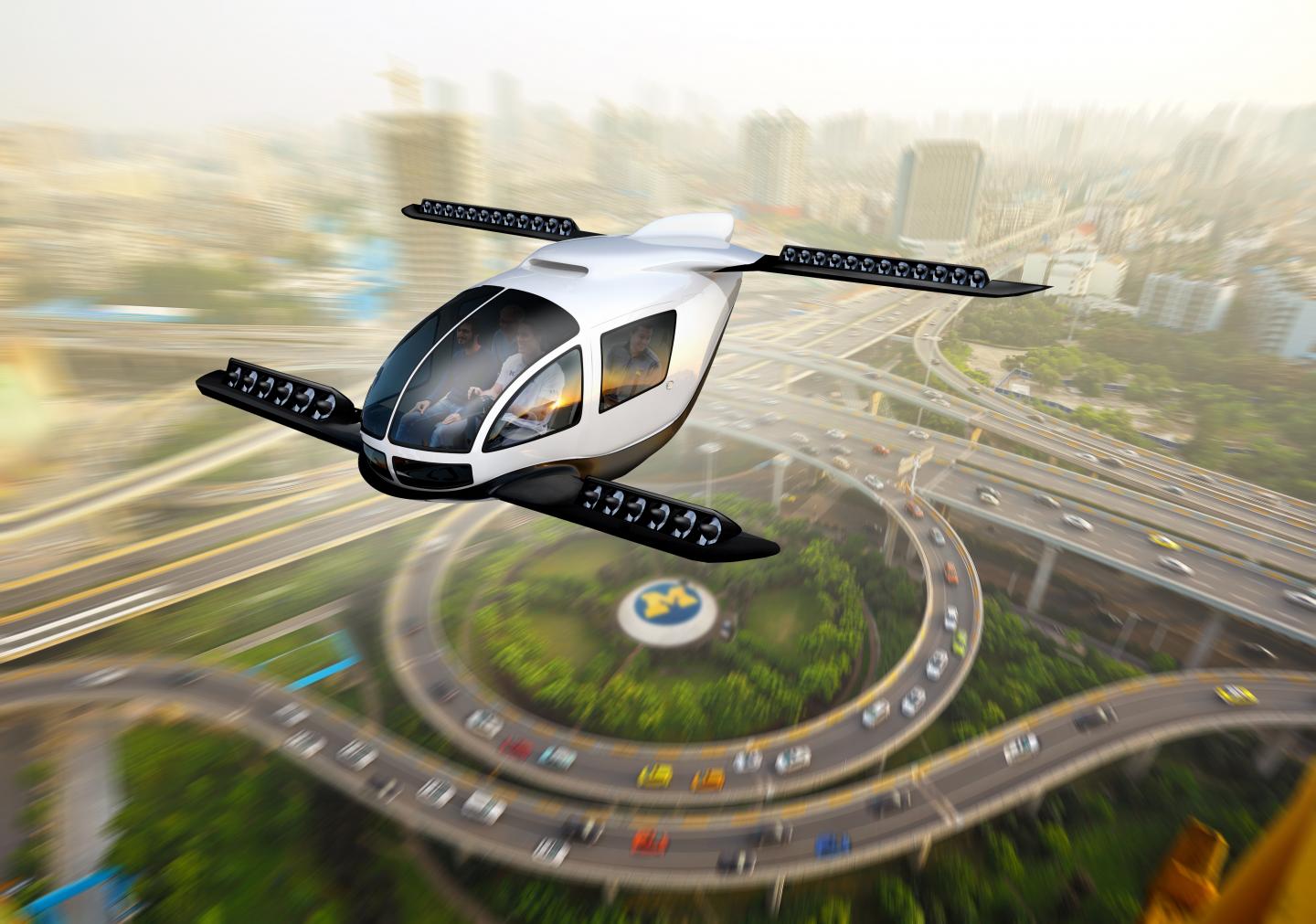
Flying cars, known as electric vertical takeoff and landing aircraft, or VTOLs, would not be suitable for short commutes, but could play a “niche role in sustainable mobility for longer trips”.
There has recently been a surge in interest and investment in the development of VTOLs. However, their sustainability implications remain somewhat unclear.
The study, published in Nature Communications, was carried out by researchers from the University of Michigan’s Center for Sustainable Systems and from Ford Motor Co. The study involved a physics-based analysis of primary energy and greenhouse gas (GHG) emissions of VTOLs compared to ground-based cars.
The team found that VTOLs would outperform their road vehicle counterparts for trips over 35 kilometers (22 miles).
For trips of 100 kilometers (62 miles), a fully loaded VTOL carrying a pilot and three passengers would produce 52% fewer emissions than gasoline vehicles and 6% less than batter-electric vehicles. VTOLs use a lot of energy during takeoff and climb, but are more efficient during the cruise phase of flight.
However, for trips under 22 miles, gasoline-powered cars are more environmentally friendly.
According to UM, the average car commute is around 11 miles.
“To me, it was very surprising to see that VTOLs were competitive with regard to energy use and greenhouse gas emissions in certain scenarios,” said Gregory Keoleian, senior author of the study and director of the Center for Sustainable Systems at U-M’s School for Environment and Sustainability.
“The VTOL is particularly energy intensive during takeoff and descent. The cruise phase of the flight, however, is much more efficient, and over long distances, makes fully loaded VTOLs competitive with ground based vehicles,” says Keoleian.
Co-author Jim Gawron, also from the University of Michigan, said: “The trips where VTOLs are more sustainable than gasoline cars only make up a small fraction of total annual vehicle-miles travelled on the ground.
“Consequently, VTOLs will be limited in their contribution and role in a sustainable mobility system.”
Akshat Kasliwal, first author of the study, believes the findings of the study could help guide the sustainable deployment of an emerging mobility system before its commercialization.
“With these VTOLs, there is an opportunity to mutually align the sustainability and business cases,” Kasliwal said.
“Not only is high passenger occupancy better for emissions, it also favors the economics of flying cars. Further, consumers could be incentivized to share trips, given the significant time savings from flying versus driving.”
